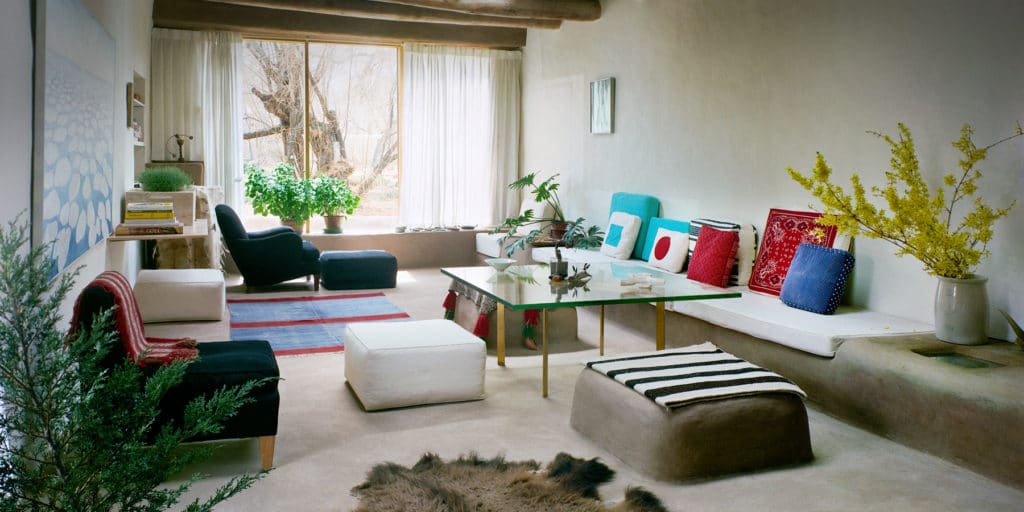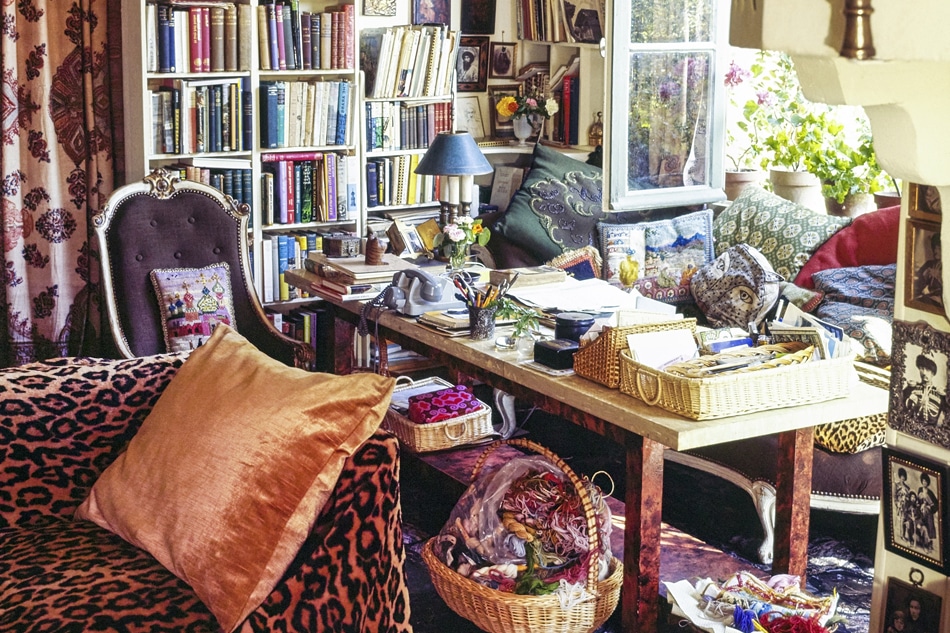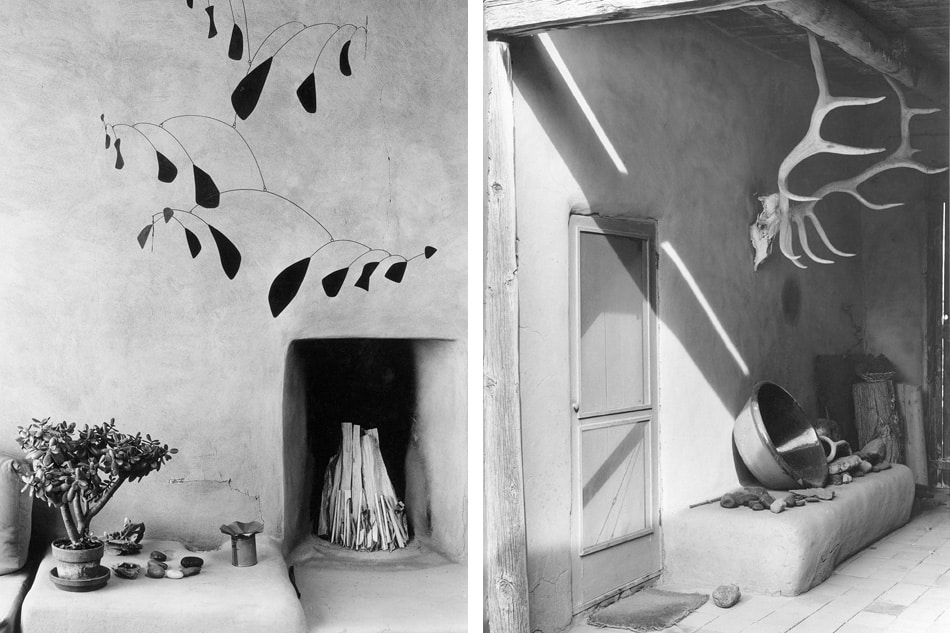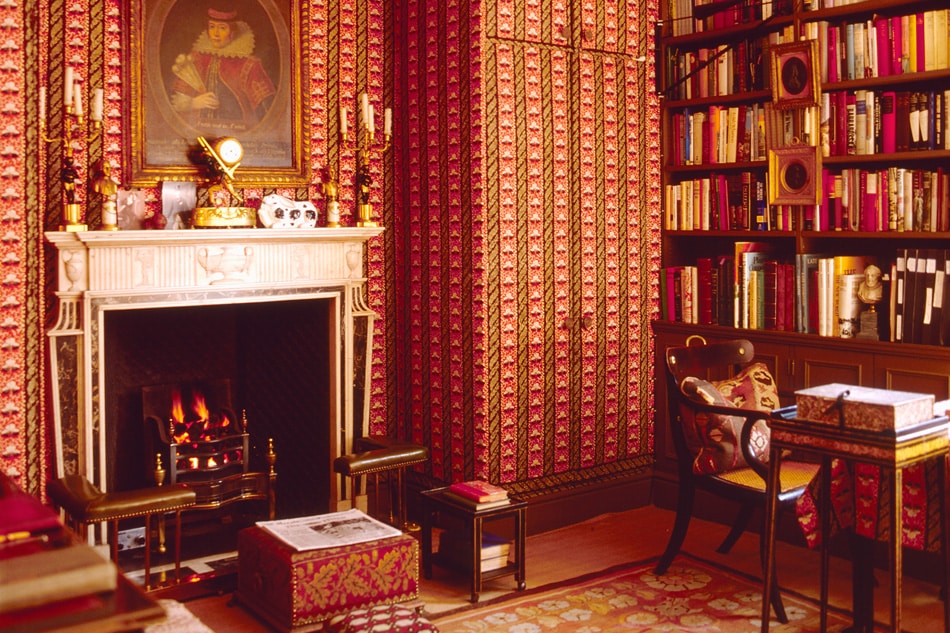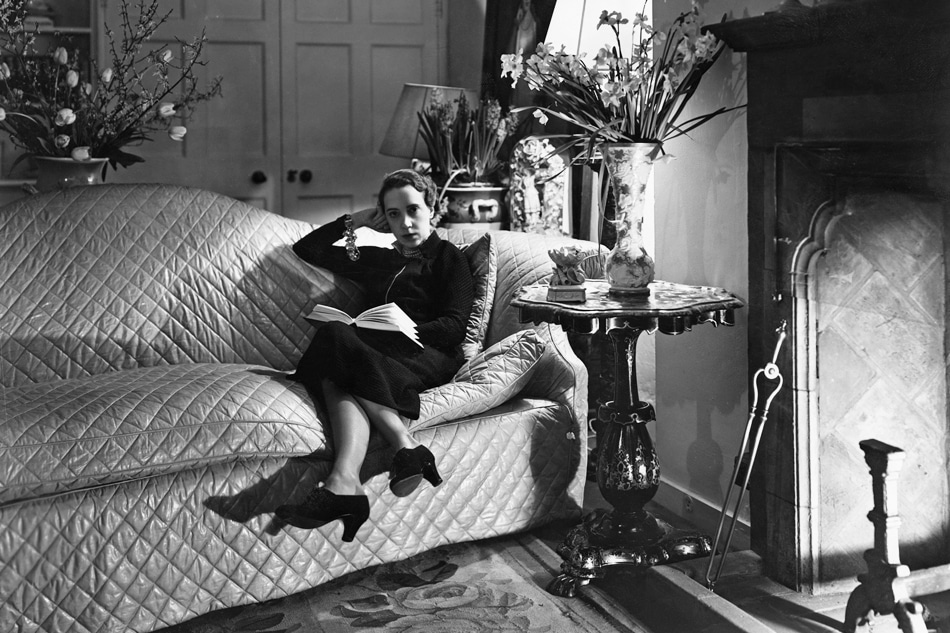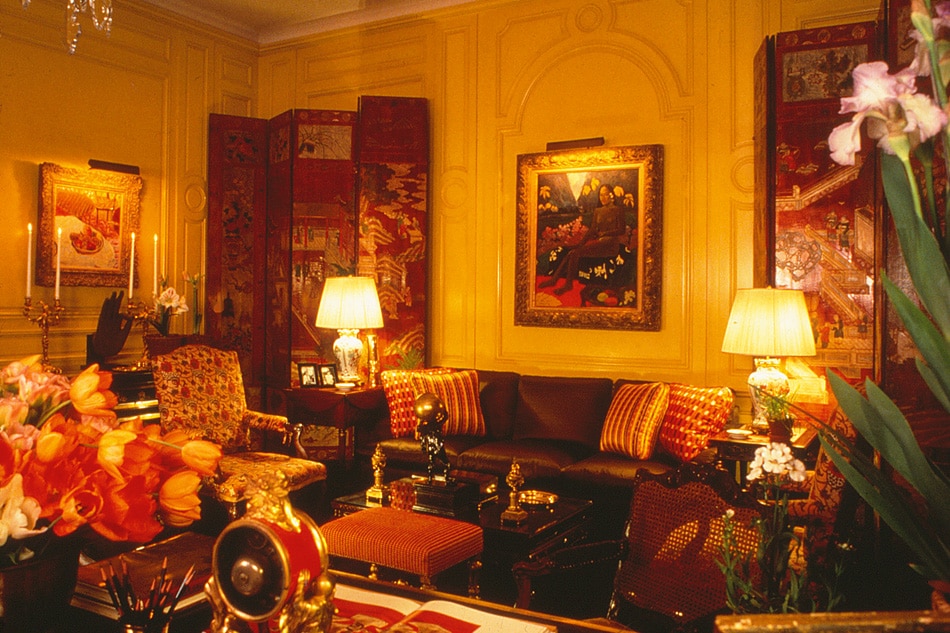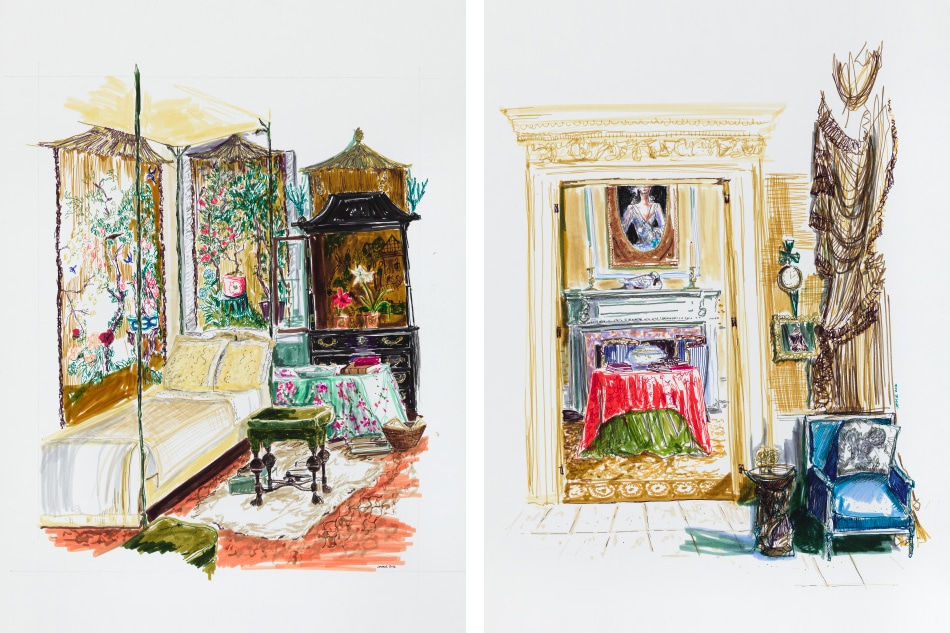
April 17, 2017A new book by North Carolina–based decorator P. Gaye Tapp provides entrée into the homes of 20th-century female style icons, including Lady Diana Cooper, seen above on Pauline Borghese’s Empire bed in the British ambassador’s residence in Paris, where her husband served as chief diplomat during World War II (photo by Cecil Beaton). Top: Tapp included the adobe-walled Abiquiu, New Mexico, home of Georgia O’Keeffe in the section of the book titled “Unconventional Eye.” (Photo by Balthazar Korab, courtesy of The Library of Congress). All photos courtesy of Rizzoli, unless otherwise noted
The introduction to P. Gaye Tapp’s new book, How They Decorated (Rizzoli), begins with Gloria Vanderbilt’s oft-repeated quotation “Decorating is autobiography.” Tapp has proven the truth of Vanderbilt’s words with her thoughtful look at the homes of 16 storied 20th-century women and how each reflects not only its owner’s taste but also her history and personality.
After a foreword by the designer Charlotte Moss, Tapp presents her 16 subjects — many but not all of whom worked with decorators — in four sections, titled “Legacy Style,” “In the Grand Manner,” “Fashionably Chic” and “Unconventional Eye.” Their homes are depicted in photographs by masters like Horst P. Horst, Cecil Beaton and Norman Parkinson, as well as watercolors by the incomparable Jeremiah Goodman and charming illustrations by Jimmie Henslee.
“Legacy Style,” which includes Lady Diana Cooper, Evangeline Bruce, Louise de Vilmorin and the Irish fashion designer Sybil Connolly, spotlights women who aimed for what Tapp describes as “the lived-in intimacy of rooms that look untouched for generations.” These women filled their houses and apartments with furniture, fabrics and objects of enduring quality. Some of them, including Cooper and Bruce, moved their furnishings from one home to another. Bruce, for her part, worked with decorators like John Fowler and Diana Phipps and, in a nod to Nancy Lancaster, hung paintings on silk ribbons in the series of ambassadors’ residences she shared with her husband, David K.E. Bruce.

Social butterfly Fleur Cowles, creator of the short-lived but influential 1950s luxury lifestyle magazine Flair, turned the ballroom of her London residence into a living room. She hung the powder-blue walls with work by Yvonne Mottet as well as her own creations, which feature flowers and animals. The bookshelves, designed by Cowles herself, echo the Georgian architecture of the Piccadilly building, known as Albany, formerly home to Lord Melbourne. Photo by Robert Trachtenberg/Trunk Archive
Perennial style icons Hélène Rochas, Mona von Bismarck and Pauline de Rothschild are covered in the book’s second section, “In the Grand Manner,” which also contains the less well-known — but no less chic — garden historian Gabrielle von Zuylen. She had more modern taste than the other three, but was equally drawn to glamour. In the 1970s, she worked with François Catroux to transform the 19th-century Paris apartment she shared with her husband, Baron Thierry van Zuylen, into a series of sleek, uncluttered interiors that served as backdrops for the couple’s French Surrealist paintings. But van Zuylen also acknowledged her debt to the unerring eye of her friend (and distant cousin by marriage) de Rothschild, saying, “Something as simple as a breakfast tray became a work of art when Pauline arranged it — a glimpse of bliss.”
The homes of the storied 20th-century women collected in How They Decorated reflect not just the taste of each but also her history and personality.

Wanderlust ruled the life of English author and historian Lesley Blanch, who filled her residences with items collected from her travels to some of the world’s most far-flung corners. Tapp writes that, often, “Blanch became part of the decoration.” Here, photographer Henry Clarke has captured her wearing a Syrian robe trimmed in gold passementerie over a long tunic. The image appeared in a 1966 issue of American Vogue. Photo by Henry Clarke/Condé Nast via Getty Images
In her “Fashionably Chic” section, Tapp puts the always swoon-worthy Babe Paley, fashion designers Elsa Schiaparelli and Pauline Trigère and Flair publisher Fleur Cowles. Paley’s Fifth Avenue apartment, designed by some of the decorating greats of the day — including Parish-Hadley; Billy Baldwin; and Stéphane Boudin, of Maison Jansen — was an ultrarefined setting for a museum’s worth of paintings by artists like Pablo Picasso and Paul Gauguin. Unsurprisingly, is is Schiaparelli’s Paris apartment that is the most eccentric of the group. Decorated with help from Jansen and Jean-Michel Frank, it includes a screen painted by Christian Bérard and a sofa with diamond quilting like that of a beach robe Schiaparelli designed.
Finally, the “Unconventional Eye” section examines Bunny Mellon’s New York townhouse and Oak Spring Farm, in Upperville, Virginia; Dominique de Menil’s elegantly idiosyncratic Houston house, designed by Philip Johnson and decorated by couturier Charles James; Georgia O’Keeffe’s adobe house in Abiquiu, New Mexico; and the writer and historian Lesley Blanch’s house in Menton, in the south of France. It’s refreshing to see the last two homes included; they are far more modest than the others but just as expressive of their owners’ tastes. O’Keeffe’s rooms mixed Navajo rugs, adobe bancos and hassocks with modernist furniture by Eero Saarinen, Harry Bertoia and Charles and Ray Eames, while Blanch’s featured layers of rugs, a Turkish-inspired conical fireplace hood and masses of pillows, many of which she needlepointed with scenes from her extensive travels.
Tapp — a North Carolina–based decorator, founder of the decorating and style blog Little Augury and creator of always-captivating Instagram posts on decorating and fashion — grew up with the idea that rooms can tell the story of their owners’ lives. “People in the South are very attached to their heirlooms,” she says, explaining that continuity is a hallmark of her subjects’ decorating efforts, no matter how many homes they had.
Tapp is also a voracious reader, and she loves to write. She began her blog in 2008, after the death of her beloved mentor Sandford Peele, a decorative painter. “He got me interested in other periods of design,” Tapp explains. “After he passed away, I started the blog as a way of keeping our conversations going.” Some time later, she met Moss, a fan of her blog, who urged her to write a book. Tapp enjoys research and shares her sources with the reader in the book’s lengthy (and tantalizing) bibliography. “What makes it interesting for me is when someone comments that I’ve set them off on a search,” she says.
Asked if there was anyone she had to leave out of How They Decorated, Tapp replies, “Gloria Guinness — I couldn’t track down all the photos I needed. And I wasn’t able to include Françoise de la Renta or Marina Guinness.” Let’s hope she can include them in her next book.
Or Support Your Local Bookstore
